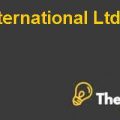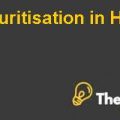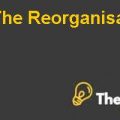
The Real Plan
After the failure of Cruzado Plan, Brazil came up with “Real Plan”. It was designed by Cardoso. In that plan it was decided to stabilize the rate of Brazilian currency to United States dollar. It was also decided to strict fiscal and monetary policies. It was decided to reduce budget deficit. It was also decided to fix the tax structure and social security system. Private sector was invited to participate in those sectors where government had monopoly. Government has monopoly in telecommunication, oil and infrastructure. Government wanted to increase the competition by deregulating particular industry like steel and transportation.
The idea of Real Plan was adopted from Argentina. Currency board arrangements were taken place. In Real Plan, it was decided not to use Currency board arrangements. 1.000 reais/$ was decided as exchange for an undecided period. Value of reais was appreciated to 0.915 reais/$ in July. Strong reaction was shown by the market. Value of reais was being appreciated. It had been appreciated to 0.889 reais/$ at the end of August.
It was found from a survey in which 52% of the respondent said that Real Plan would not be able to lower inflation rate while 35% of the total respondent said that Real Plan would be able to decrease inflation rate. It was noticed that real inflation rate had been decreased by 50% in June. It had been decreased from 4.33% in July to 3.95% in August.
Strategic Possibilities
Banco Itau had many options. One option was that Banco Itau could focus on service charges instead of holding treasuries. Reduction in inflation would decrease the interest rate. It was noted that private borrowers were not able to pay their interest payment. If inflation had increased, it would become more difficult for borrowers to pay its interest payments.
Banco Itau was able to invest in treasuries with the help of international deposits but Banco Itau would suppose to face exchange risk. It real got devalued; Banco Itau would suffer from loan. Real was strong and government was keen to keep it strong. That risk could be mitigating by future contracts of foreign exchange.
Monetary Policy & Fiscal Policy
In Brazil, National Monetary Council (CMN) was responsible to make decisions regarding the monetary and fiscal policy. National Monetary Council reviewed every policy. Central Bank of Brazil was regulating the banking sector. It was the responsibility of the Central Bank of Brazil to enforce all the policies that were recommended by National Monetary Council.
There were many roles that a central bank was supposed to follow. The central bank was supposed to use different instruments in its monetary policy. These instruments could be open market operations, re-lending, minimum reserve requirements, interest rate policy and credit policy. These tools were used by the central bank.
In order to minimize the circulation of money in the market, central bank increased the minimum reserve ratio, which helped to reduce inflation. Sometimes, central banks issued bond and t-bills to shift money flow from market to the central bank. In order to keep the exchange rate stable, central banks kept large portion of foreign currencies.
A problem was identified that in case inflation went down, then the purchasing power of customers would go down as well. Fewer amounts would be deposited. Less deposit meant fewer amounts would be invested in government bonds; therefore, bank’s profit would be affected. In that case, banks were supposed to change their strategy from floating to conventional banking services; but borrowers were given favor by the government. Another point was that Banco Itau was not able to recover the cost of conventional banking services. Due to high cost, Banco Itau was going through corporate restructuring and large numbers of jobs were cut down. Around 53,000 people were fired between 1986 and 1994.
The Brazilian government required finance. It was obvious that the bank would not give loan to Brazil. There were only few options that Brazil had. One option was to print money and pay its debt. Due to this inflation would increase that was already too high. Another option was to issue treasury bills, which would help to increase inflow from the market. Third option was to issue long term bonds, but it should be noticed that there was an issue of trust. People were not willing to buy government papers. There was a hyperinflation in Brazil (See Figure 1 in the appendix). High fixed rate was required by treasuries. Some treasuries were demanding one day repurchase agreement.........................................
This is just a sample partial case solution. Please place the order on the website to order your own originally done case solution.













